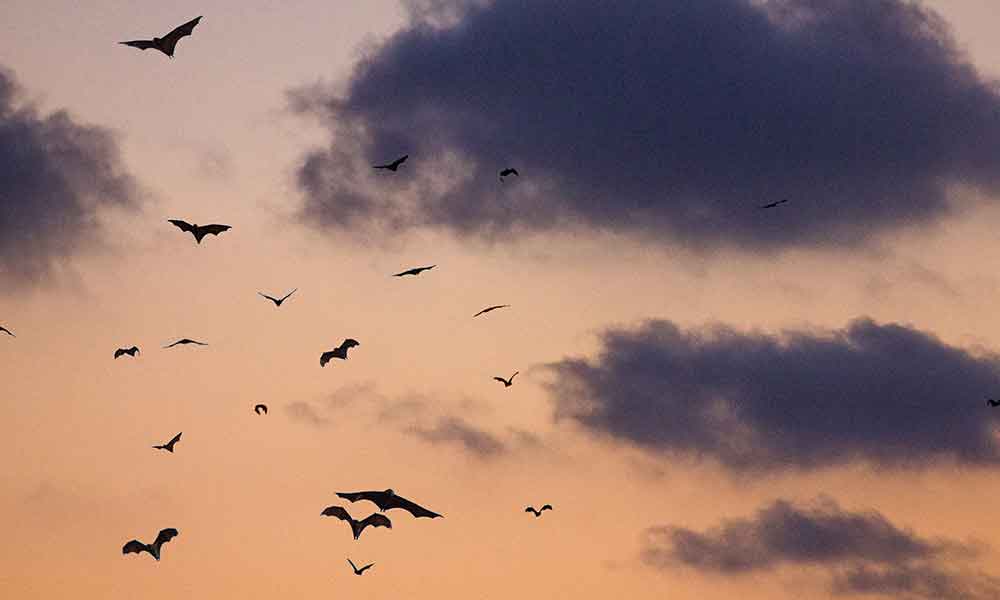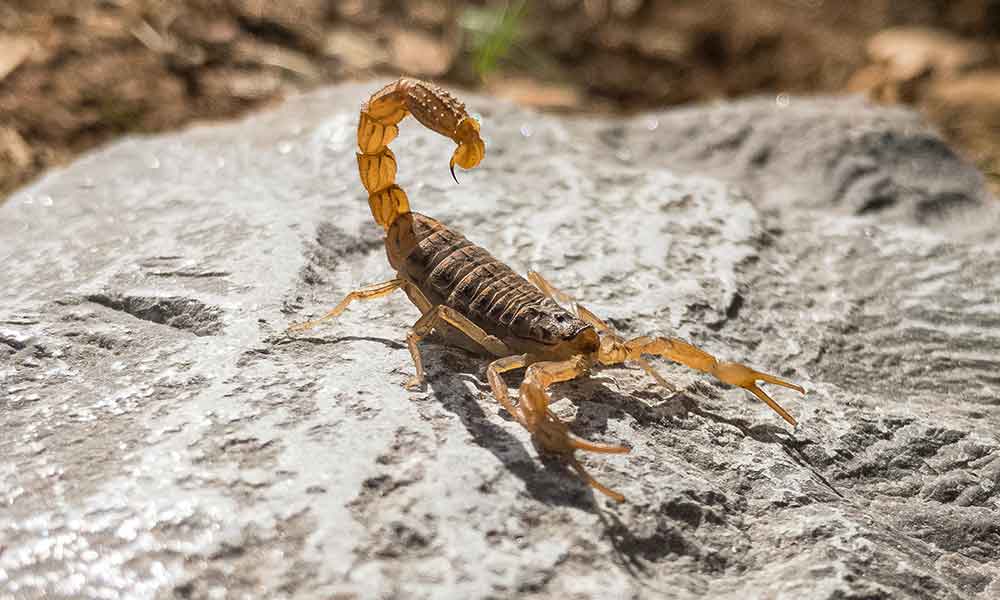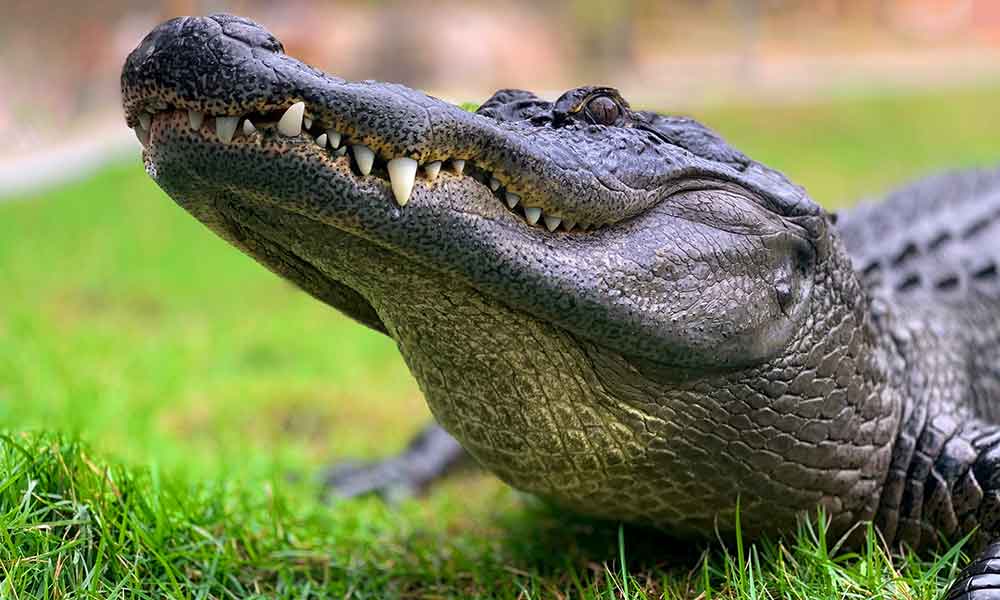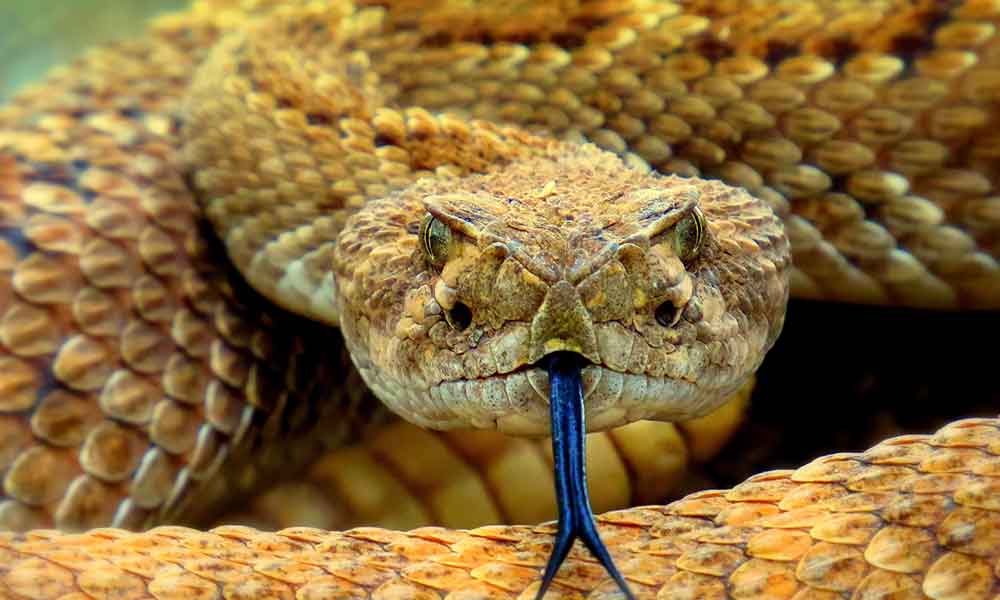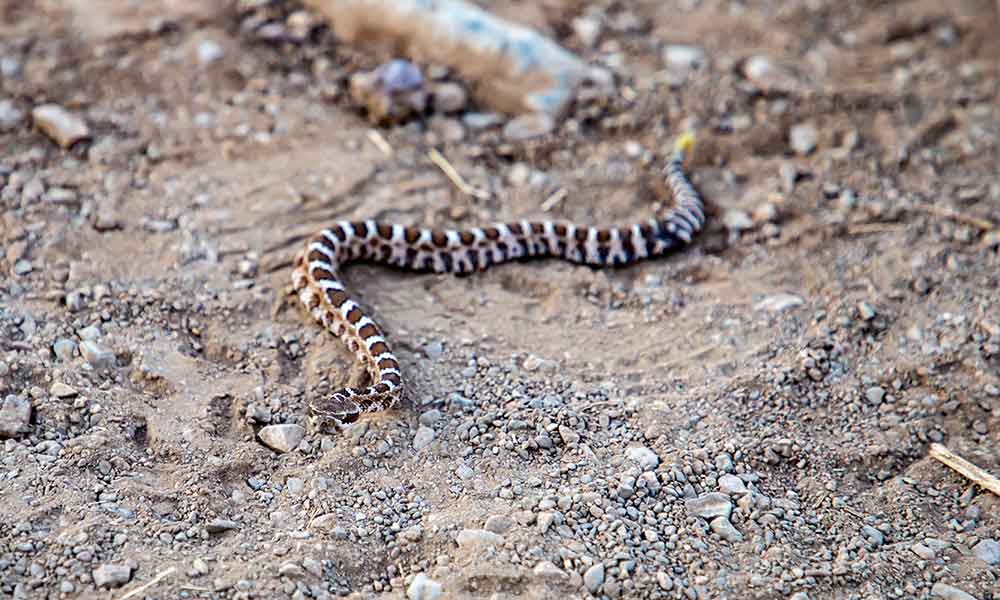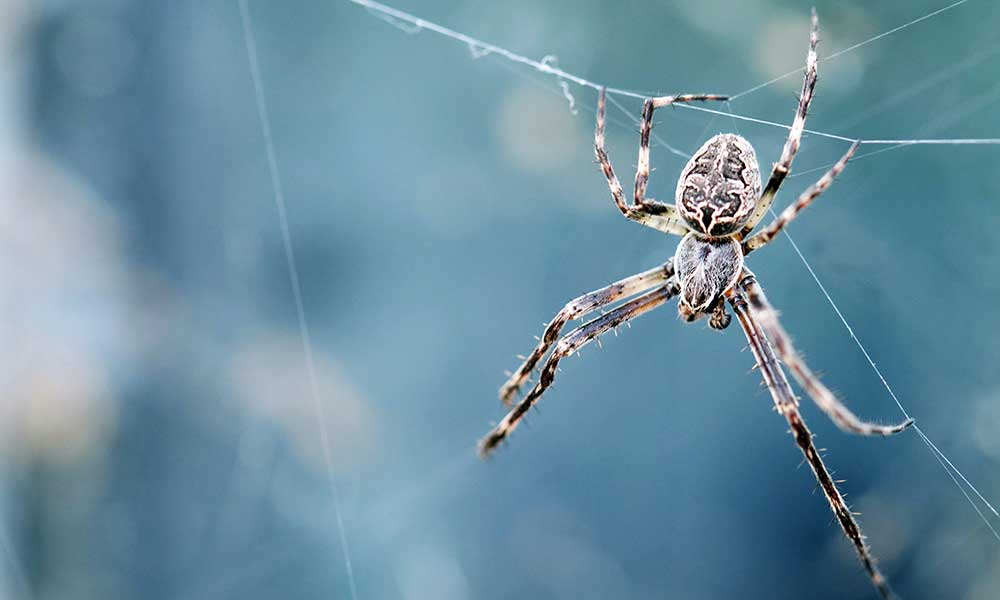Bats can be found in most parts of the world. They are abundant and adaptable, with bat species existing everywhere from the hottest deserts to the coldest polar regions.
Bats account for over a 5th of all mammal species and are incredibly diverse, as we shall discover in this guide.
What Do Bats Eat?
Bats feed primarily on flying insects, including mosquitoes, beetles, crickets, moths, and chinch bugs.
A little brown bat—a very aptly-named creature with a body smaller than your thumb—can eat its entire body weight in insects in a single night.
When you account for all of the bats in North America, that’s a lot of insects. In fact, it has been estimated that the reduction of bat populations in the Northeastern United States means there are up to 1,320 more metric tons of insects every year.
Some bats eat fruit, as well as pollen. They are actually very useful pollinators, leaving their mark as they fly from tree to tree in search of food.
Where Do Bats Live?
Bats seek refuge in dark and quiet locations that are protected from the elements. These include caves, bridges, mines, old buildings, and trees.
Little brown bats often seek solace in tree cavities. Hoary bats seek the protection of trees with thick foliage. The Indiana bat roosts in cave roofs, often in tight clusters.
What is the Largest Bat in North America?
The western mastiff bat, also known as the greater mastiff bat, is one of the largest bats in the United States. The hoary bat also ranks highly on that list.
What Families of Bats are Found in North America?
The families of bats in North America include the Vespertilionidae, Molossidae, Phyllostomidae, and Mormoopidae. Take a look at our list below to see all of the bats classified under these species.
What Types of Bats are in Canada?
There are 18 species of bats in Canada, including the little brown bat and the hoary bat, the latter of which is the largest species of bat in the country.
Are Bats Endangered?
Over 200 bat species around the world are endangered, including several here in North America. The Mexican long-nose bat and the little brown bat are both classified as endangered species and are protected by the Fish and Wildlife Service.
Types of Bat Species in North America
There are a huge number of bat species in the United States and Canada, but this is just a fraction of the 1,400+ bat species around the world.
From the hoary bat to the Indiana bet, these are the species that you can find in North America.
The Florida Bonneted Bat (Eumops floridanus)
- Species: Molossidae
- Size: 20 inches
- Location: South Florida
- Conservation Status: Vulnerable
Wagner’s Bonneted Bat (Eumops glaucinis)
- Species: Molossidae
- Size: 9.8 inches
- Location: Argentina, Mexico, Cuba
- Conservation Status: Least Concern
Western Mastiff Bat (Eumops perotis)
- Species: Molossidae
- Size: 5.5 to 7.5 inches
- Location: Western United States, Mexico, and South America
- Conservation Status: Least Concern
Underwood’s Bonneted Bat (Eumops underwoodi)
- Species: Molossidae
- Size: 20 to 22 inches
- Location: Belize, Costa Rica, El Salvador, Guatemala, Honduras, Mexico, Nicaragua, and the United States
- Conservation Status: Least Concern
Velvety Free-Tailed Bat (Molossus molossus)
- Species: Molossidae
- Size: 4 inches
- Location: Florida Keys
- Conservation Status: Least Concern
Pocketed Free-Tailed Bat (Nyctinomops femorosaccus)
- Species: Molossidae
- Size: 4.4 inches
- Location: Mexico, Arizona, California, New Mexico, and Texas
- Conservation Status: Least Concern
Big Free-Tailed Bat (Nyctinomops macrotis)
- Species: Molossidae
- Size: 2.4 inches
- Location: North, Central, and South America
- Conservation Status: Least Concern
Mexican Free-Tailed Bat (Tadarida brasiliensis)
- Species: Molossidae
- Size: 3.5 inches
- Location: North America
- Conservation Status: Least Concern
Ghost-faced Bat (Mormoops megalophylla)
- Species: Mormoopidae
- Size: 5.5 inches
- Location: Belize, Colombia, Ecuador, El Salvador, Guatemala, Honduras, Mexico, Peru, Trinidad and Tobago, Venezuela, and Texas
- Conservation Status: Least Concern
Jamaican Fruit Bat (Artibeus jamaicensis)
- Species: Phyllostomidae
- Size: 3.1 to 3.5 inches
- Location: Mexico, Central America, Northwestern South America
- Conservation Status: Least Concern
Mexican Long-Tongued Bat (Choeronycteris mexicana)
- Species: Phyllostomidae
- Size: 0.2 inches
- Location: El Salvador, Guatemala, Honduras, Mexico, and the United States
- Conservation Status: Near Threatened
Mexican Long-Nosed Bats (Leptonycteris Yerbabuenae)
- Species: Phyllostomidae
- Size: 2.75 to 3.75 inches
- Location: Southwestern New Mexico, Texas, Mexico
- Conservation Status: Endangered
California Leaf-Nosed Bat (Macrotus californicus)
- Species: Phyllostomidae
- Size: 14.1 inches
- Location: Southern California, Nevada, Arizona, and Western Mexico
- Conservation Status: Least Concern
Pallid Bat (Antrozous pallidus)
- Species: Vespertilionidae
- Size: 2.75 inches
- Location: British Columbia, Mexico, Cuba
- Conservation Status: Least Concern
Rafinesque’s Big-Eared Bat (Corynorhinus rafinesquii)
- Species: Vespertilionidae
- Size: 3.0 to 3.9 inches
- Location: South-eastern U.S
- Conservation Status: Least Concern
Townsend’s Big-Eared Bat (Corynorhinus townsendii)
- Species: Vespertilionidae
- Size: 4 inches
- Location: Western Oregon
- Conservation Status: Least Concern
Big Brown Bat (Eptesicus fuscus)
- Species: Vespertilionidae
- Size: 12.8 to 13.8 inches
- Location: Southern Canada, Alaska, Colombia, and Venezuela.
- Conservation Status: Least Concern
Spotted Bat (Euderma maculatum)
- Species: Vespertilionidae
- Size: 4.7 inches
- Location: Arizona, California, Colorado, Oregon, New Mexico, Utah, and British Columbia, Canada
- Conservation Status: Least Concern
Allen’s big-eared Bat (Idionycteris phyllotis)
- Species: Vespertilionidae
- Size: 1.3 to 1.6 inches
- Location: Mexico, Arizona, California, Nevada, New Mexico, Utah, Colorado
- Conservation Status: Least Concern
Silver-Haired Bats (Lasionycteris noctivagans)
- Species: Vespertilionidae
- Size: 3.9 inches
- Location: Bermuda, Canada, Mexico, and the United States
- Conservation Status: Least Concern
Western Red Bat (Lasiurus frantzii)
- Species: Vespertilionidae
- Size: 11.4 to 13 inches
- Location: Southwestern United States
- Conservation Status: Least Concern
Eastern Red Bat (Lasiurus borealis)
- Species: Vespertilionidae
- Size: 4.3 inches
- Location: Eastern North America
- Conservation Status: Least Concern
Hoary Bat (Lasiurus cinereus)
- Species: Vespertilionidae
- Location: North America
- Conservation Status: Least Concern
Southern Yellow Bat (Dasypterus ega)
- Species: Vespertilionidae
- Size: 1.6 to 1.9 inches
- Location: South, North, and Central America
- Conservation Status: Least Concern
Seminole Bat (Lasiurus seminolus)
- Species: Vespertilionidae
- Size: 4.2 to 4.4 inches
- Location: South-eastern United States
- Conservation Status: Least Concern
Southwestern Myotis (Myotis auriculus)
- Species: Vespertilionidae
- Size: 0.7 to 0.8 inches
- Location: Guatemala, Mexico, Arizona, and New Mexico
- Conservation Status: Least Concern
Southeastern Myotis (Myotis austroriparius)
- Species: Vespertilionidae
- Size: 4 to 5 inches
- Location: South-eastern United States
- Conservation Status: Least Concern
California Myotis (Myotis californicus)
- Species: Vespertilionidae
- Size: 2.7 to 3.7 inches
- Location: Canada, Guatemala, Mexico, California
- Conservation Status: Least Concern
Western Small-footed Bat (Myotis ciliolabrum)
- Species: Vespertilionidae
- Size: 3.1 to 3.9 inches
- Location: North America
- Conservation Status: Least Concern
Long-eared Myotis (Myotis evotis)
- Species: Vespertilionidae
- Size: 0.7 to 0.8 inches
- Location: Western Canada, Western United States, and Mexico
- Conservation Status: Least Concern
Gray Bat (Myotis grisescens)
- Species: Vespertilionidae
- Size: 1.55 inches
- Location: South-eastern United States
- Conservation Status: Vulnerable
Keen’s Myotis (Myotis keenii)
- Species: Vespertilionidae
- Size: 3.1 to 3.5 inches
- Location: Canada, Washington, and Alaska
- Conservation Status: Least Concern
Eastern Small-Footed Myotis (Myotis leibii)
- Species: Vespertilionidae
- Size: 2.5 to 3.7 inches
- Location: Canada
- Conservation Status: Endangered
Little Brown Bat (Myotis lucifugus)
- Species: Vespertilionidae
- Size: 2.5 to 4 inches
- Location: North America
- Conservation Status: Endangered
Arizona Myotis (Myotis occultus)
- Species: Vespertilionidae
- Location: Central Mexico, Southwestern United States
- Conservation Status: Least Concern
Northern Long-eared Bat (Myotis septentrionalis)
- Species: Vespertilionidae
- Size: 3.4 inches
- Location: North America
- Conservation Status: Near Threatened
Indiana Bat (Myotis sodalis)
- Species: Vespertilionidae
- Size: 1.2 to 2.0 inches
- Location: Southern and Midwestern U.S
- Conservation Status: Near Threatened
Fringed Myotis (Myotis thysanodes)
- Species: Vespertilionidae
- Size: 3.3 inches
- Location: British Columbia, Mexico, and the Western U.S
- Conservation Status: Least Concern
Cave Myotis (Myotis velifer)
- Species: Vespertilionidae
- Size: 1.5 to 1.7 inches
- Location: Southwest Kansas, Mexico
- Conservation Status: Least Concern
Long-legged Myotis (Myotis volans)
- Species: Vespertilionidae
- Size: 10 to 12 inches
- Location: Western Canada, Mexico, Western U.S
- Conservation Status: Least Concern
Yuma Myotis (Myotis yumanensis)
- Species: Vespertilionidae
- Size: 1.5 to 1.9 inches
- Location: Western, North America
- Conservation Status: Least Concern
Evening Bat (Nycticeius humeralis)
- Species: Vespertilionidae
- Size: 1.33 inches
- Location: North America
- Conservation Status: Least Concern
Canyon Bat (Parastrellus hesperus)
- Species: Vespertilionidae
- Size: 2.4 to 3.1 inches
- Location: Mexico, Western U.S
- Conservation Status: Least Concern
Tricolored Bat (Perimyotis subflavus)
- Species: Vespertilionidae
- Size: 1.5 to 2 inches
- Location: Indiana
- Conservation Status: Vulnerable
To What Family Do Bats Belong?
Bats belong to the order Chiroptera, which comes from the ancient Greek words meaning “hand” and “wing”. In Old English, the bat was known as a “flittermouse”, and it had a similar name in old German and Swedish. This name essentially means “fluttering mouse”.
Interestingly, similar words are still used in Swedish (fladdermus), Norwegian (flaggermus), Danish (flagermus), and German (fledermaus). And while we borrowed the order name from the Greeks, they use “νυχτεριδα” which comes from “nocturnal”.
Many North American species of bats are in the “myotis” order, which comes to us from Latin (via Greek) and means “Mouse Ear”. It is a reference to the fact that their ears are longer than they are wide.
Big Brown Bats vs Little Brown Bats
Little brown bats and big brown bats are known as “house bats”. They can be found hiding out in buildings and you may stumble across them if you’re venturing into attic spaces or basements.
Size is the main difference between the two, as the name suggests. Big brown bats are nearly twice the size of little brown bats.
Big brown bats also have broader noses and silkier coats.

